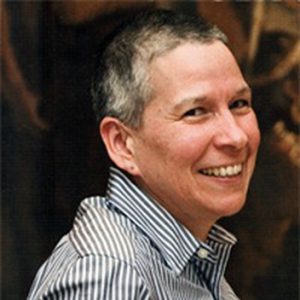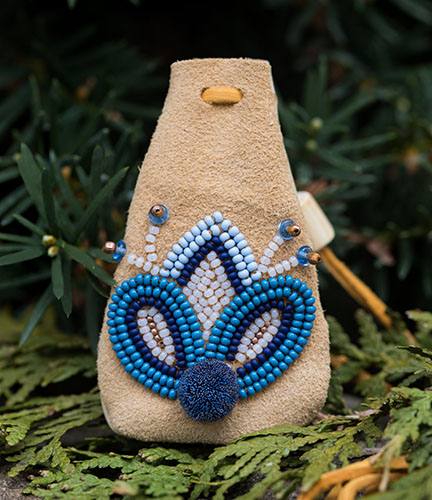Two Métis artists spoke with York University Faculty of Education Professor Susan Dion, associate vice-president Indigenous initiatives, about how their art educates and invites others to experience their culture and heritage.
Dion, asked Métis artists Marissa Magneson and Jason Baerg about their roles as artists and advocates, and how the visual arts are important in educating others.

“As an academic in the Faculty of Education and the University’s inaugural vice-president of Indigenous initiatives, there are many important lessons that can be taken from Indigenous artforms, both related to self discovery and celebration of important days of history,” said Dion. “Many Indigenous artists, such as Métis artist Marissa Magneson, use art to signify important moments in Indigenous Peoples’ histories. A good example is Louis Riel Day, which is marked each year on November 16.
“It is an important day for Métis Peoples because Riel well known for his role in the Northwest Resistance, which was a stand against government encroachment of Métis lands. He is also widely considered a hero for defending Métis language, culture and political rights,” said Dion.“Following the defeat at the siege of Batoche, Riel was arrested, convicted of treason and executed. Despite this tragedy, Riel knew that artists would take the lead in the revitalization of Métis history and culture. This is best illustrated by his often-quoted words, ‘My people will sleep for 100 years, but when they awake, it will be the artists who will give them their spirit back.’”

York alumna Marissa Magneson’s work is centred around decolonizing education, strengthening community and cultural reclamation. “It is through the arts that I have found my way back to my culture and now I use art to educate and share this journey with others. For many of my ancestors, it was safer to pass as French than admit they were Métis,” said Magneson. “If you could pass as white, you did for the safety and future of yourself and your children. Today I am proud to be Métis. The seeds my ancestors planted within me are now blossoming as I reclaim our culture, languages, traditions, artforms and ways of life.”
Magneson’s medicine pouch is beaded on leather that was sourced from her cousin, John Somosi and includes a design from Métis artist, Dylan Miner. “For me the design represents this phase of awakening that Riel spoke about. As the flower begins to bud, we are reclaiming what was taken, but never forgotten,” said Magneson.
Magneson is a Cree-Métis artist, photographer, educator, and workshop facilitator. An alumna of York University, Magneson has a BFA (honours) degree from York University and an MA in Canadian and Indigenous Studies from Trent University. Her master’s research explores Indigenous methodologies through a decolonial approach centred in beadwork as visual storytelling.
For Métis artist Jason Baerg, his work draws on work by the late Norval Morrisseau, considered to be the grandfather of contemporary Indigenous art.

“‘Copper and Red Thunderbird’ is a tribute to Norval Morrisseau (Copper Thunderbird) and my Spirit Name Mihko-Pihêsiw Napîw (Red Thunderbird),” said Baerg. “I was given my second Spirit Name, Mihko-Pihêsiw Napîw (Red Thunderbird), by Elder Raymond Ballentine from Pelican Narrow First Nations, which is in the vicinity of my homeland and where I was raised in Prince Albert. In the ceremony, he mentioned that he sensed Norval’s energy around and gifted me the name.
“The central repeating pattern in the installation is a quote from a Norval Morrisseau Thunderbird painting,” explained Baerg. “I used the positive and negative space of the wingspan of one of his compositions to create a laser cut out used in the installation, and the four suspended paintings.”
As an artist, Baerg is committed to the goal of supporting Métis self-determination and its advancement in the arts through forms of gathering, knowledge sharing, research and advocacy. He brought together a group of Métis artists, curators, writers and educators and formed the Shushkitew Collective to build capacity, and to support intergenerational dialogue and learning, while concurrently activating the visioning of Métis futurities. In reference to the Shushkitew Collective Baerg writes, “We engage with the concept of manâwewin to speak to the precious resources we need to sustain our bodies, our communities and our creative spirit.”
Baerg is a registered member of the Métis Nations of Ontario and serves his community as an Indigenous activist, curator, educator, and visual artist. He graduated from Concordia University with a Bachelor of Fine Arts, a Master of Fine Arts from Rutgers University and is enrolled in the PhD program at Monash University. Baerg teaches as the assistant professor in Indigenous Practices in Contemporary Painting and Media Art at OCAD University. Exemplifying his commitment to the community, he co-founded The Shushkitew Collective and The Métis Artist Collective. Baerg has served as volunteer Chair for such organizations as the Indigenous Curatorial Collective and the National Indigenous Media Arts Coalition. As a visual artist, he pushes digital interventions in drawing, painting and new media installation.
To see more of Magneson’s work, visit her on Instagram: @MagnesonStudios / @MarissaMagnesonPhotography or through her website at marissamagneson.com. To see more of Baerg’s work and to learn more about his exhibitions and advocacy, visit his website at jasonbaerg.ca.
Article originally published in the November 14, 2021 issue of Yfile.
